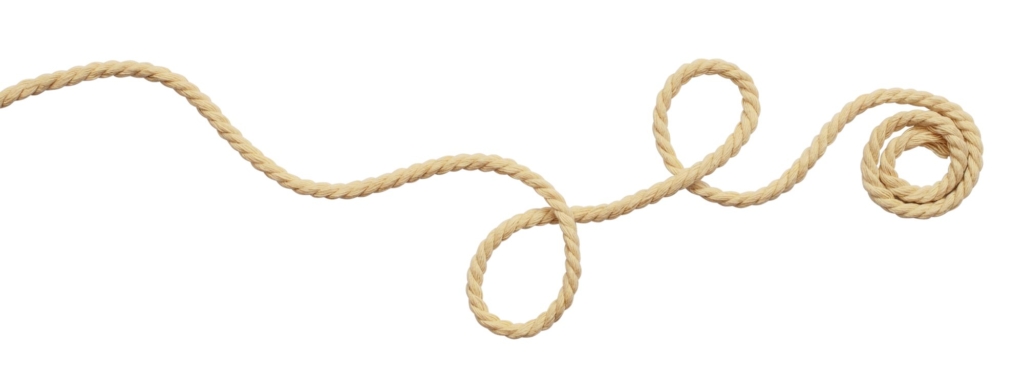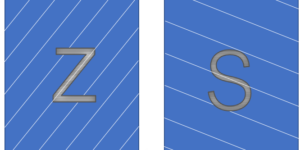
Yarn twisting is a process that can significantly affect the properties of the final twisted yarn. Yarn twisting can involve twisting a single yarn or twisting multiple yarns together in a process called plying. It can also be taken a step further by twisting already-plied yarns into cabled yarns.
Twisting can alter a yarn’s softness, tensile strength and abrasion resistance. Twisting yarns together can be used to increase the count of a yarn, but also to ply different types of yarn together, to produce a unique yarn with very specific properties. An example of this would be a low melt yarn twisted with a high tenacity yarn, which allows the twisted yarn to take advantage of the bonding properties of the low melt yarn and the strength of the high tenacity yarn.
Direction of Twisting

Twist Level
As the twist level of a yarn increases, the yarn’s properties gradually change; the stiffness increases, as does the yarn’s abrasion resistance. Each yarn has an optimum twisting level for maximum tensile strength, which once passed, will reduce the tensile strength of the yarn. The level of twist in a yarn is often measured in TPM (twists per metre) or TPI (twists per inch). The level of twist in a spun yarn is normally much higher than that in a flat yarn, which does not require the twist in the yarn to keep the fibres together. The twist level and direction are often noted together, so a 60z yarn is Z-twisted with 60 twists per metre.
Single Yarn and Staple Fibre Twisting
Twisting a single ply of yarn is used in order to bind the staple fibres in a spun yarn together. You can read more about this spinning process. In addition to spun yarns, single yarns can also include monofilaments and flat yarns that have little to no twist. When the flat yarn is twisted, it loses its slippery texture. By changing the slippery texture through twisting, the yarn can be made to grip fabric more effectively. Twisting single yarns is also normally a prerequisite for using a single yarn in a plied or cabled yarn.
Plied Yarn
Plying involves twisting at least two threads together. Twisting multiple threads together increases the yarn count, so 6 threads of an 800 dtex yarn would result in a plied yarn with a final yarn count slightly higher than 4800 dtex. By increasing the number of threads through plying, the strength of the final yarn also increases. Twisting the yarn can increase the strength of the final yarn beyond the sum of the strength of the component yarns.
An example of a twisted sewing thread would be three S-twisted single yarns which are Z-twisted together. By twisting in the opposite direction to the single twisted yarns, the final plied yarn is balanced, meaning that the forces in the yarn will not cause the yarn to twist and curl when not under tension. You can read more about yarn twisting here.
Cabled Yarn
Cabled yarns, also known as cord yarns and multi fold yarns, are produced by using taking yarns through a complex set of twisting processes, such that the final yarn incorporated yarns with different twists that balance out. An example of a cabled yarn would be an S-twisted yarn made from three Z-twisted yarn which are themselves made by plying three S-twisted single yarns. Cabled yarns are often used in tyres and sewing threads. You can read more about cabled yarns here.

